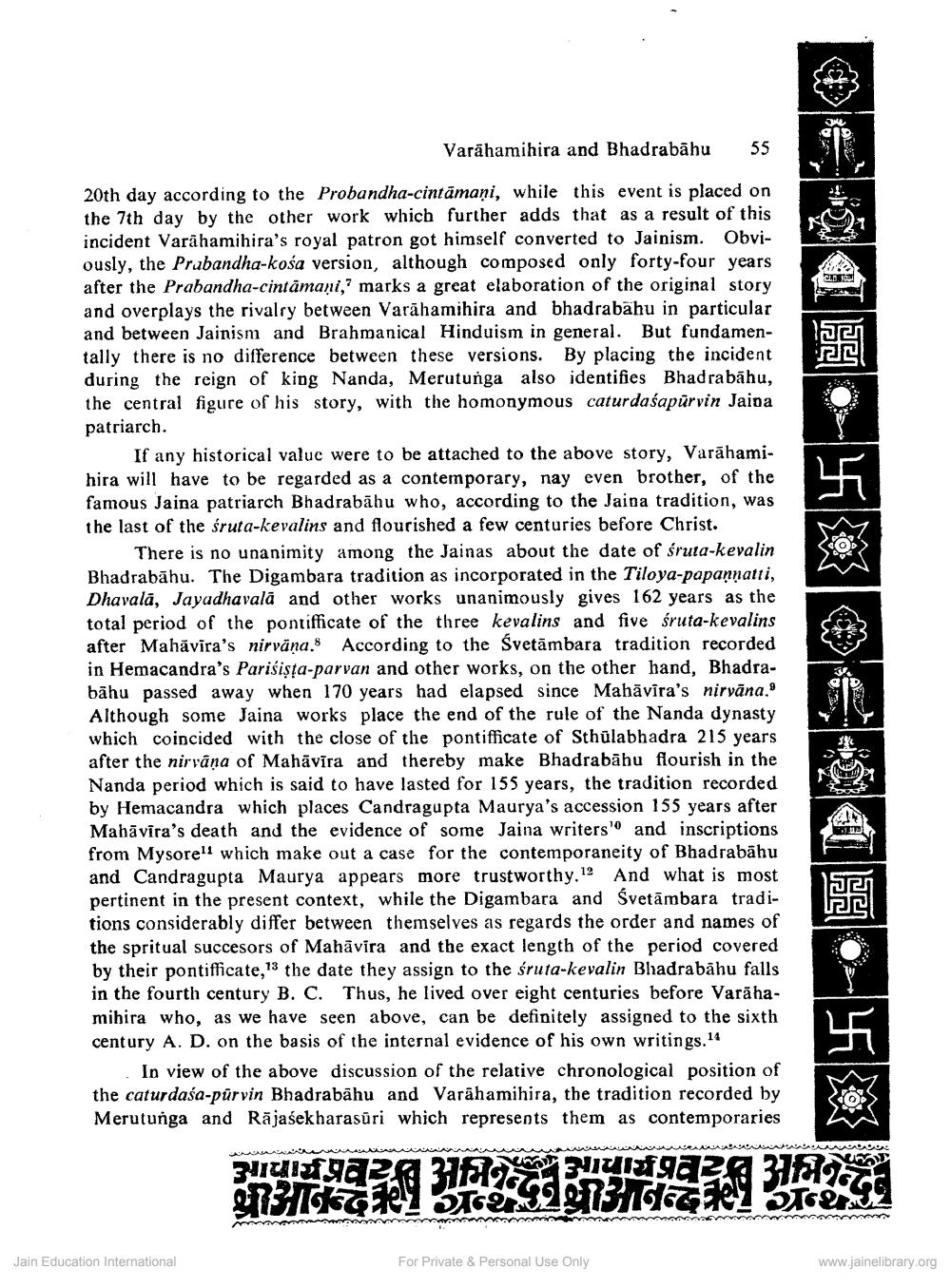________________
Varahamihira and Bhadrabahu
55
20th day according to the Probandha-cintamani, while this event is placed on the 7th day by the other work which further adds that as a result of this incident Varähamihira's royal patron got himself converted to Jainism. Obviously, the Prabandha-kosa version, although composed only forty-four years. after the Prabandha-cintamani, marks a great elaboration of the original story and overplays the rivalry between Varähamihira and bhadrabahu in particular and between Jainism and Brahmanical Hinduism in general. But fundamentally there is no difference between these versions. By placing the incident during the reign of king Nanda, Merutunga also identifies Bhadrabahu, the central figure of his story, with the homonymous caturdasapurvin Jaina patriarch.
If any historical value were to be attached to the above story, Varāhamihira will have to be regarded as a contemporary, nay even brother, of the famous Jaina patriarch Bhadrabähu who, according to the Jaina tradition, was the last of the śruta-kevalins and flourished a few centuries before Christ.
There is no unanimity among the Jainas about the date of śruta-kevalin Bhadrabahu. The Digambara tradition as incorporated in the Tiloya-papannatti, Dhavala, Jayadhavala and other works unanimously gives 162 years as the total period of the pontifficate of the three kevalins and five śruta-kevalins after Mahavira's nirvana. According to the Svetämbara tradition recorded in Hemacandra's Parisista-parvan and other works, on the other hand, Bhadrabahu passed away when 170 years had elapsed since Mahavira's nirvana." Although some Jaina works place the end of the rule of the Nanda dynasty which coincided with the close of the pontifficate of Sthulabhadra 215 years after the nirvāṇa of Mahavira and thereby make Bhadrabahu flourish in the Nanda period which is said to have lasted for 155 years, the tradition recorded by Hemacandra which places Candragupta Maurya's accession 155 years after Mahavira's death and the evidence of some Jaina writers' and inscriptions from Mysore11 which make out a case for the contemporaneity of Bhadrabahu and Candragupta Maurya appears more trustworthy. And what is most pertinent in the present context, while the Digambara and Svetämbara traditions considerably differ between themselves as regards the order and names of the spritual succesors of Mahavira and the exact length of the period covered by their pontificate," the date they assign to the druta-kevalin Bhadrabahu falls in the fourth century B. C. Thus, he lived over eight centuries before Varahamihira who, as we have seen above, can be definitely assigned to the sixth century A. D. on the basis of the internal evidence of his own writings. 14
In view of the above discussion of the relative chronological position of the caturdasa-purvin Bhadrabahu and Varahamihira, the tradition recorded by Merutunga and Rajasekharasuri which represents them as contemporaries
Jain Education International
आपाय वर आमन्देन श्रा आनन्द थ 21316
प्रव
21:2
Τ
For Private & Personal Use Only
प
卍
B
www.jainelibrary.org




